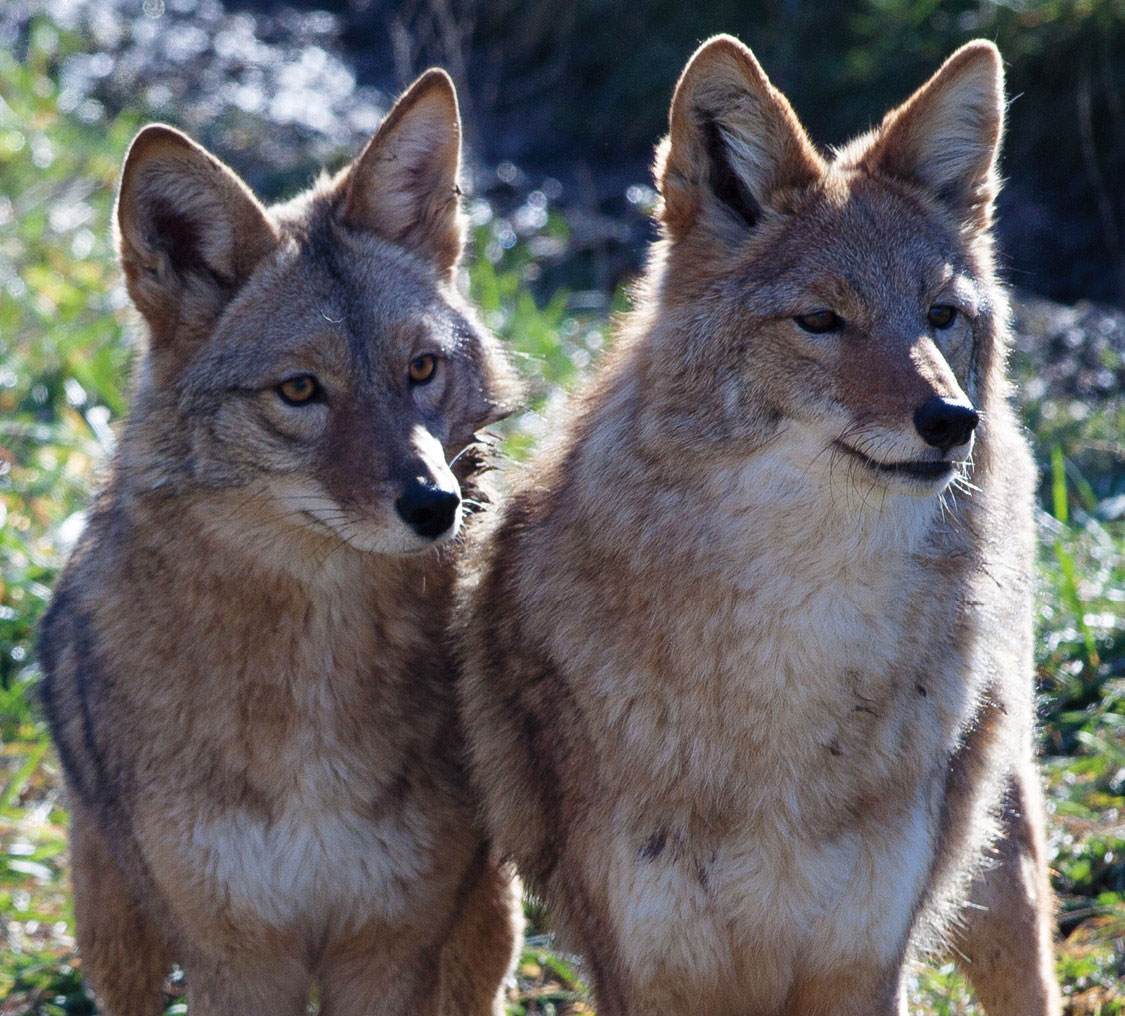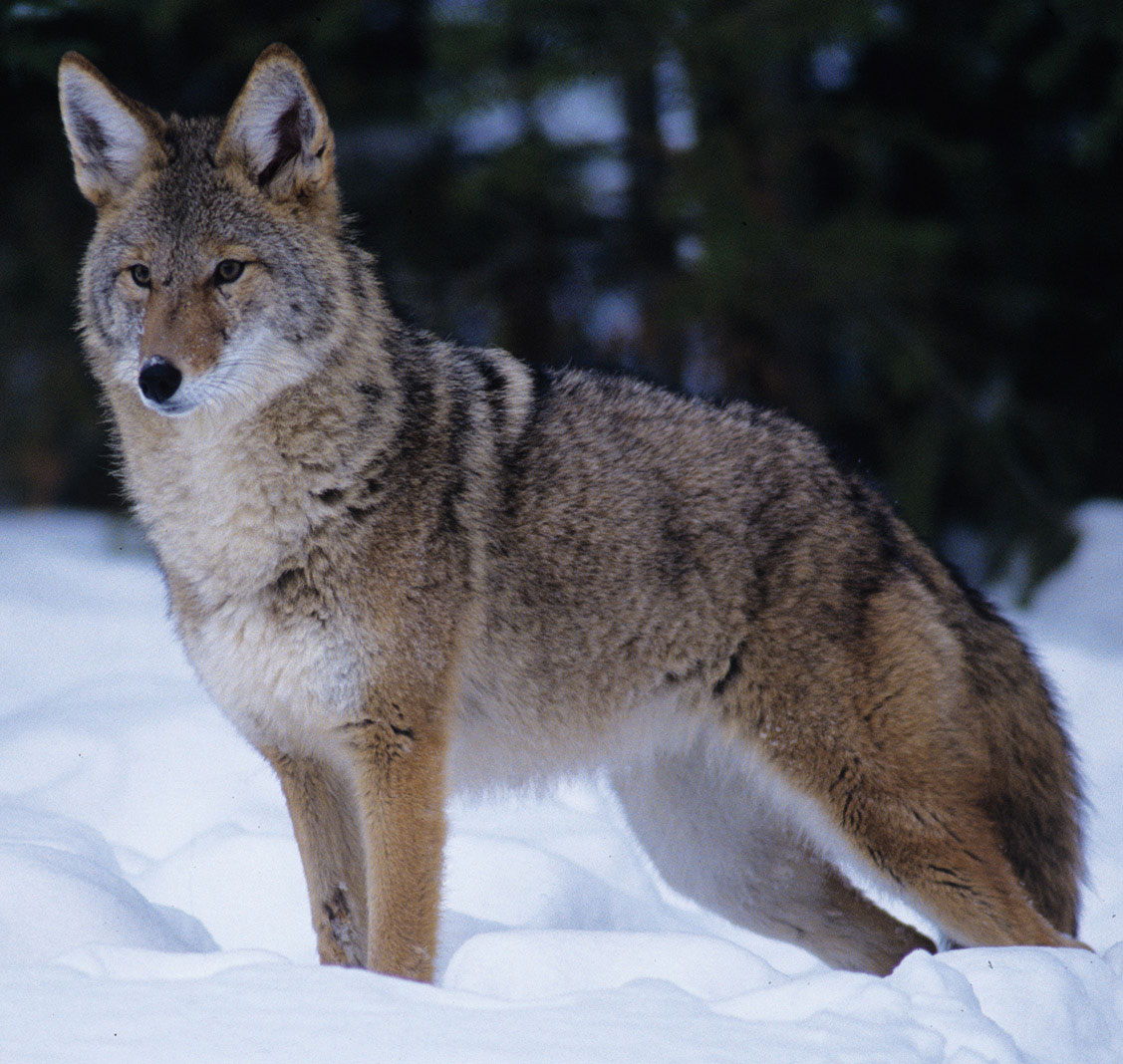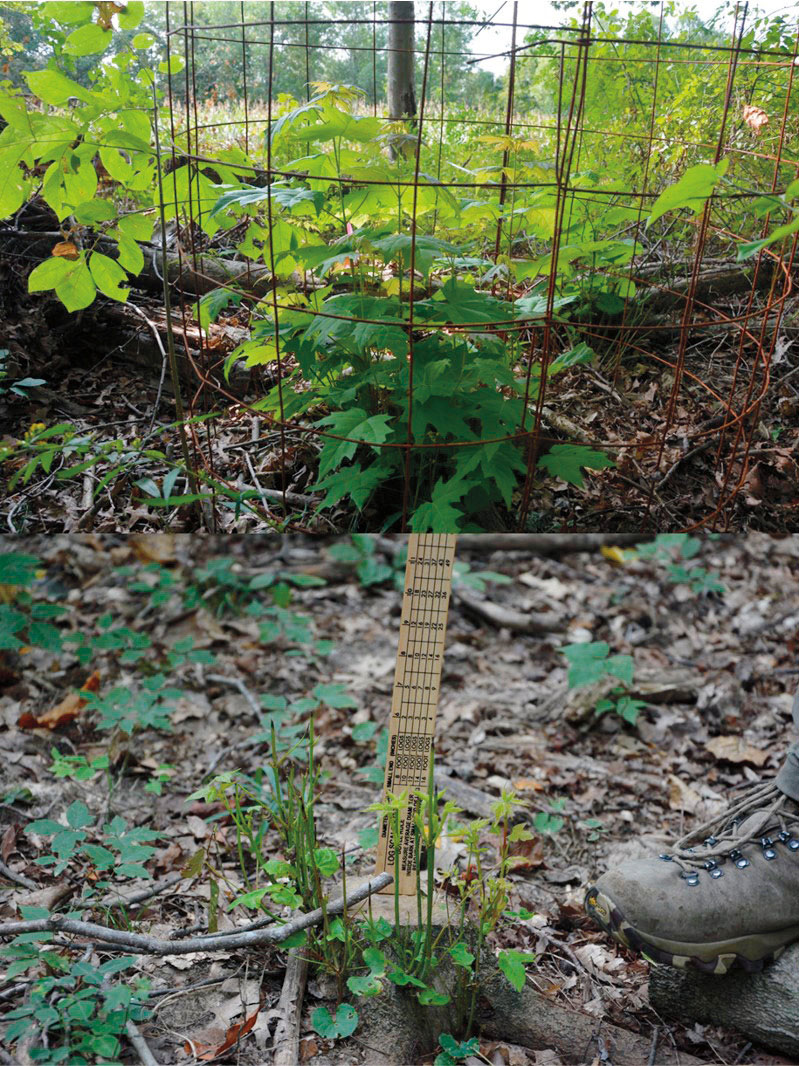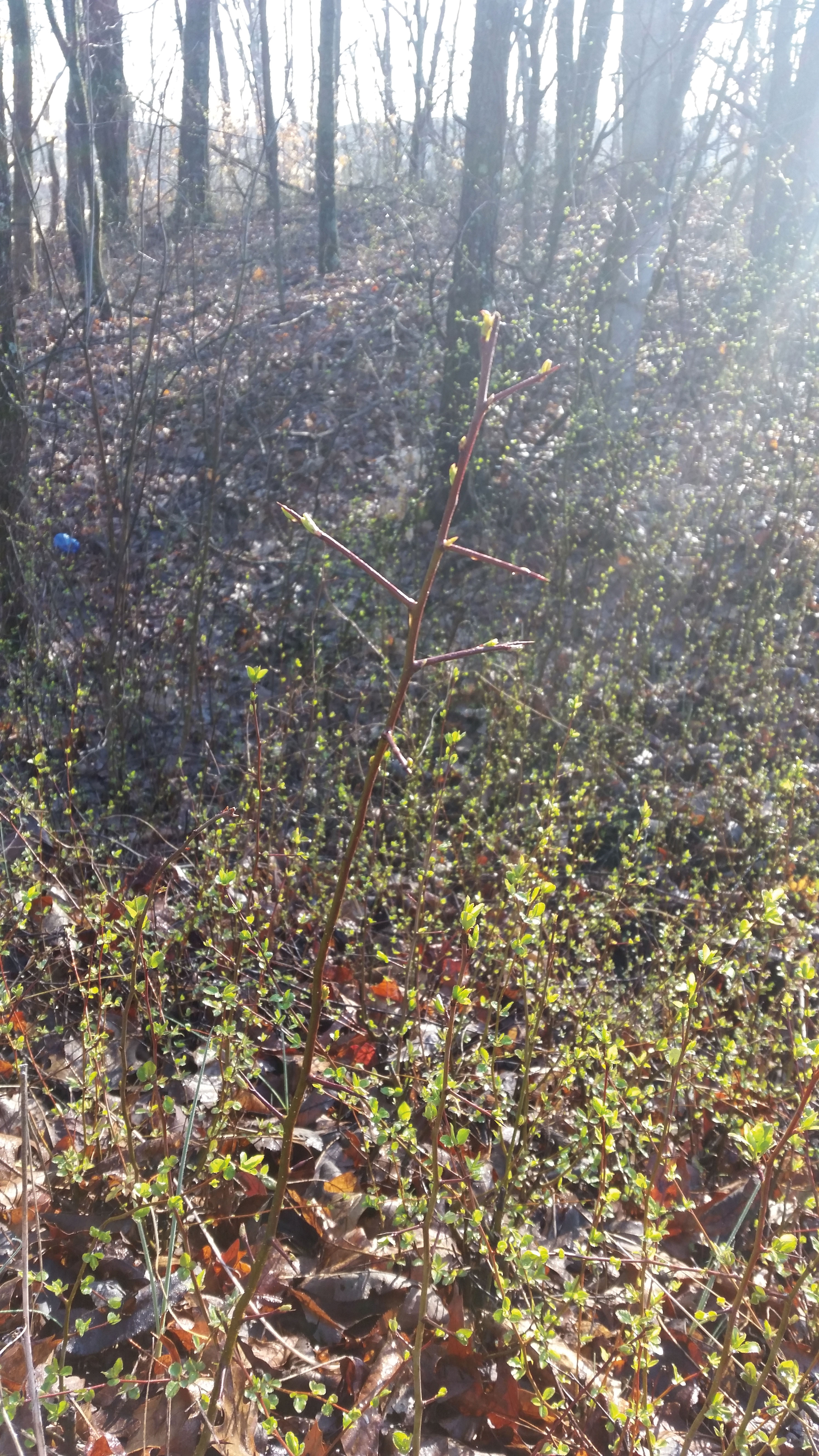The Callery Pear – Friend or Foe?
By Kalli Dunn, Mike Saunders, and Mike Jenkins
Callery pear, also known as flowering pear or Bradford pear, is among the most popular ornamental trees in the eastern United States. The precocious flowering of the species is one of the first signs of spring in the Midwest and Callery pear is a common feature of plantings, urban trees, downtown areas, and suburban developments. Unfortunately, the species is rapidly developing into an aggressive invader of native forest, savanna, and prairie habitats across the eastern United States. Expansion of Callery pear into these habitats represents a significant problem for land managers as the species has the potential to outcompete and suppress native species that are much more desirable for wildlife habitat and timber production.
 Figure 1: Callery pear actively stump sprouting post cut. At Purdue University, we have been working on a research project investigating the community effects of a Callery pear invasion on a native hardwood forest located in southern Indiana. We are working to identify potential dispersal agents and pathways of Callery pear as a function of genetic diversity across the population. Understanding the effects of Callery pear on native communities and the role of genetic diversity as it relates to dispersal are of the utmost importance in designing effective management for this and other invasive species.
Figure 1: Callery pear actively stump sprouting post cut. At Purdue University, we have been working on a research project investigating the community effects of a Callery pear invasion on a native hardwood forest located in southern Indiana. We are working to identify potential dispersal agents and pathways of Callery pear as a function of genetic diversity across the population. Understanding the effects of Callery pear on native communities and the role of genetic diversity as it relates to dispersal are of the utmost importance in designing effective management for this and other invasive species.
We have found that Callery pear has the potential to outcompete oaks and other native species; contributing to the oak regeneration failure problem throughout eastern North America. This is a function of similarities in desired growing conditions of the species. Oaks are relatively shade intolerant requiring a more open midstory and understory layer that allows sunlight to reach the forest floor to effectively regenerate. Callery pear is an opportunist. This species will rapidly invade and dominate areas of available light; with its rapid growth rate, it is able to overtop and outcompete more shade-tolerant competitors. Therefore, identifying and controlling Callery pear in your woodlands should be a goal of management. Otherwise, Callery pear stems will continue to invade new areas, increase in density, and eventually have the potential to eliminate regeneration of native species.
Controlling this emerging invasive species can be a challenge. Callery pear has a deep, strong tap root that limits pulling even small stems. Additionally, it actively stump sprouts meaning when cut or girdled, follow up cut-stump herbicide application will be necessary to kill an individual plant. Finally, the general form of most stems is rather spindly with leaves congregated close to the stem (and each other). This limits the efficacy of many broadcast foliar herbicides unless spray volumes or herbicide concentrations are high; this in turn, can lead to non-target damage on the native flora you may be trying to protect. In general, successive mechanical and/or herbicide treatments are most successful in effectively controlling and eradicating this species.
Catching invasions early during their establishment is an important factor in effective control. Individual Callery pear can grow very quickly and be capable of producing pollens and viable seed as early as three years. The species also produces abundant fruits and seeds which are readily dispersed by several bird species including European Starlings and American Robins. This means Callery pear can quickly establish and develop high population density in new areas. Ease of control of Callery pear is a factor that is relatively dependent on population density making control of spread and removal of the species quite difficult where density is high.
 Figure 2: Early spring blossoms of Callery pear. In many areas of its expanding range, Callery pear does not appear to be exerting significant pressure on native communities; it commonly exists alongside native species. However, the species has been prone to explosive development in degraded woodlands and grasslands, particularly near urban and suburban areas. Further, there is evidence, in more mature invasions such as the one we study in southern Indiana, that the influence and dominance of Callery pear may be leading to overall shifts in forest structure and composition. From our research observations, Callery pear can dominate areas that have undergone natural and anthropogenic canopy disturbances that increased available light. Its rapid growth rate allows the species to quickly overtop native seedlings and begin to shade them, thus preventing regeneration of more desirable timber species.
Figure 2: Early spring blossoms of Callery pear. In many areas of its expanding range, Callery pear does not appear to be exerting significant pressure on native communities; it commonly exists alongside native species. However, the species has been prone to explosive development in degraded woodlands and grasslands, particularly near urban and suburban areas. Further, there is evidence, in more mature invasions such as the one we study in southern Indiana, that the influence and dominance of Callery pear may be leading to overall shifts in forest structure and composition. From our research observations, Callery pear can dominate areas that have undergone natural and anthropogenic canopy disturbances that increased available light. Its rapid growth rate allows the species to quickly overtop native seedlings and begin to shade them, thus preventing regeneration of more desirable timber species.
Controlling any invasive species in its early stages of expansion is an important means of mitigating negative ecosystem impacts in the future. The goal of this research is to gain a better understanding of exactly how Callery pear is influencing native communities in order to develop the best management practices for control of Callery pear in order to preserve our healthy Indiana forestlands.
 Figure 3: Young stem of Callery pear, demonstrates the numerous and large thorns. Kalli Dunn is a graduate student in the Department of Forestry and Natural Resources at
Figure 3: Young stem of Callery pear, demonstrates the numerous and large thorns. Kalli Dunn is a graduate student in the Department of Forestry and Natural Resources at  Figure 4: Callery pear seedling with long taproot. Purdue University. Mike Saunders is an associate professor of ecology and natural resources in the Department of Forestry and Natural Resources at Purdue University. Mike Jenkins is an associate professor of forest ecology in the Department of Forestry and Natural Resources at Purdue University.
Figure 4: Callery pear seedling with long taproot. Purdue University. Mike Saunders is an associate professor of ecology and natural resources in the Department of Forestry and Natural Resources at Purdue University. Mike Jenkins is an associate professor of forest ecology in the Department of Forestry and Natural Resources at Purdue University. Figure 5: High density seedling patch of regenerating Callery pear.
Figure 5: High density seedling patch of regenerating Callery pear.
